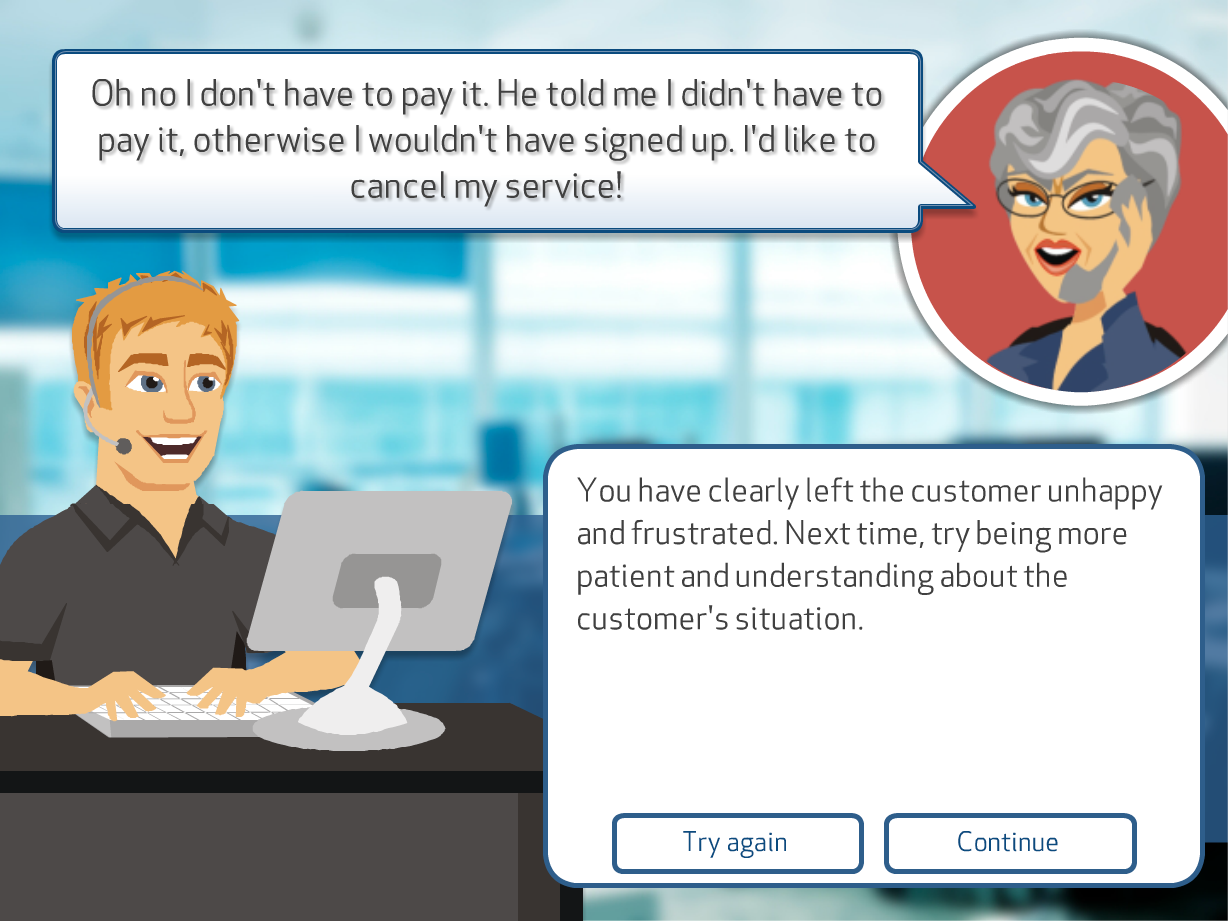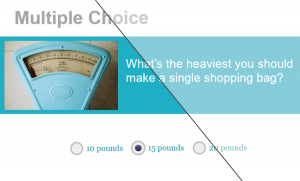Five Things to Include in Your E-Learning Scenarios
E-Learning scenarios are a great way to challenge your learners with real-life situations and to make your courses more interactive. When designed properly, e-learning scenarios let your learners make their own decisions, and more importantly, learn from their mistakes. While tools like Articulate Storyline and Adobe Captivate make it easy to create simple e-learning scenarios, you want to make sure you incorporate important design aspects that take can your scenarios from good to great.
Here are five things you should always include in your e-learning scenarios.
1. Story
People relate to stories, and stories can give your learners a sense of context. When creating an e-learning scenario, having a story lets you include characters, locations, and details that might affect how your learners make their decisions.
For example, let’s say you’re creating a scenario on the topic of harassment in the workplace. Does it matter if the harassment occurs in the view of others or in a private office? Does it matter if the people involved are peers? Does it matter if they’re male or female? It might! Incorporating these details in your narrative can make your scenario more complex and realistic.
2. Meaningful Interaction
Interactivity is one of the best ways to get your learners engaged with your course. It’s easy to create a scenario where the learners simply click the next button to see what happens next, but it’s not very meaningful, and it doesn’t make the learners use their critical thinking skills.
While story is important, you don’t want to just TELL a story. The story is a framework for the leaner to make decisions and see the outcomes. Think about the decisions your learners will need to make on the job and look for ways to weave similar decision points into the story. This makes them an active participant in the story and helps them use their new knowledge and skills. Remember, the purpose of a scenario is to let your learners think through a situation, make a decision, and see the outcome.
3. Realistic Situations
E-Learning scenarios are only as impactful if they are realistic. If your scenarios aren’t realistic and don’t represent what can actually happen, how can you expect your learners to apply the information in real life?
Although it might be easier to create an e-learning scenario with hypothetical situations and outcomes, if they aren’t plausible, they have no place in your course. Take the time to think through each scenario and create situations and outcomes that represent what actually happens on the job. It also helps to consult with your subject-matter experts, and even your target audience, to help you develop realistic content.
4. Realistic Consequences
When you make a bad decision in real life, there’s usually a consequence. This is how we learn to avoid making the same bad decision in the future. In real life, the consequences of bad decisions can result in the loss of sales, legal liability, or injury. Although you’d never want your learners to experience these consequences in real life, it doesn’t mean you can’t incorporate them into your e-learning scenarios.
Letting learners see the results of their actions helps them to further understand the importance of the content and lets them explore different outcomes in a safe environment. Just like creating realistic situations, partner with your subject-matter experts to figure out what happens when a bad decision is made.
Here’s a great example demonstrating realistic consequences. In this call center training example, the customer becomes increasingly satisfied or angry, depending on the decisions you make.
5. Feedback
When person is learning something new in real life, there’s usually someone there to provide feedback and coaching through the process. Although you can’t possibly sit with every learner to coach them through an e-learning scenario, it doesn’t mean you can’t incorporate feedback based on their decisions.
Just like providing realistic consequences, it’s important to provide feedback to help the learner understand why a decision was bad and how to avoid it in the future. In the feedback, you can also let the user try the scenario again or provide additional learning resources.
E-Learning scenarios are a great way to let your learners explore real-life situations and learn from their mistakes in a safe environment. E-Learning scenarios don’t have to be complicated to be effective; they just need to be engaging and realistic.
What are some other ways you’ve made your e-learning scenarios engaging and realistic? Share your tips by commenting below.


 Previous Post
Previous Post Next Post
Next Post



